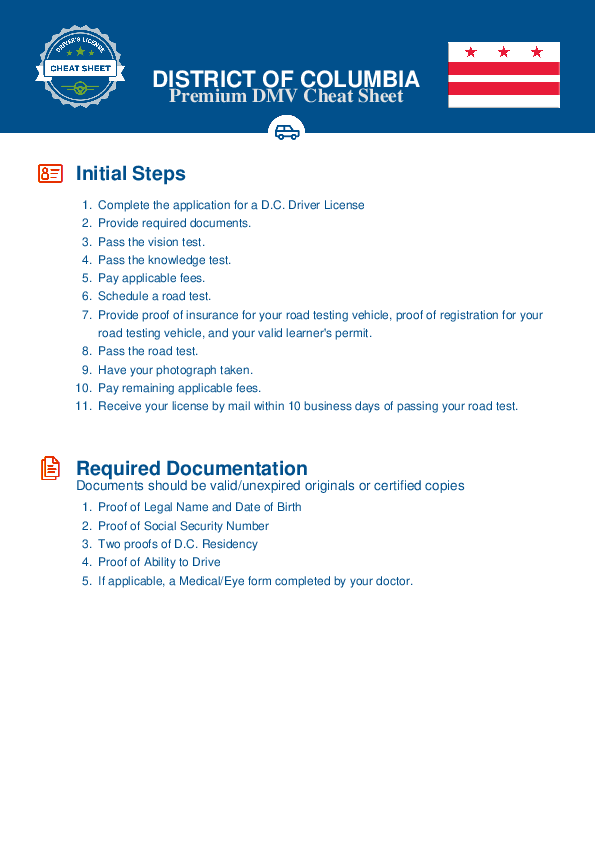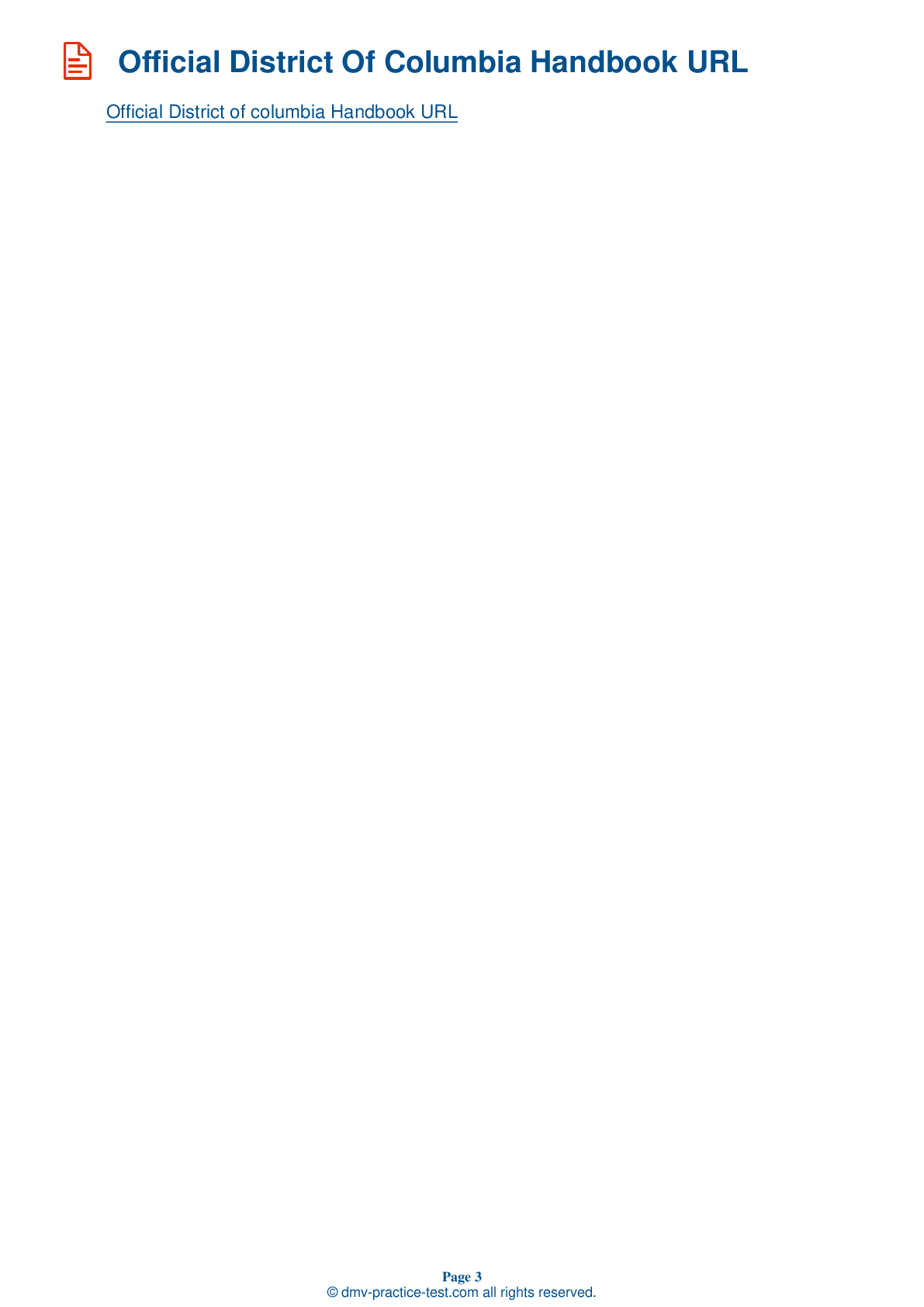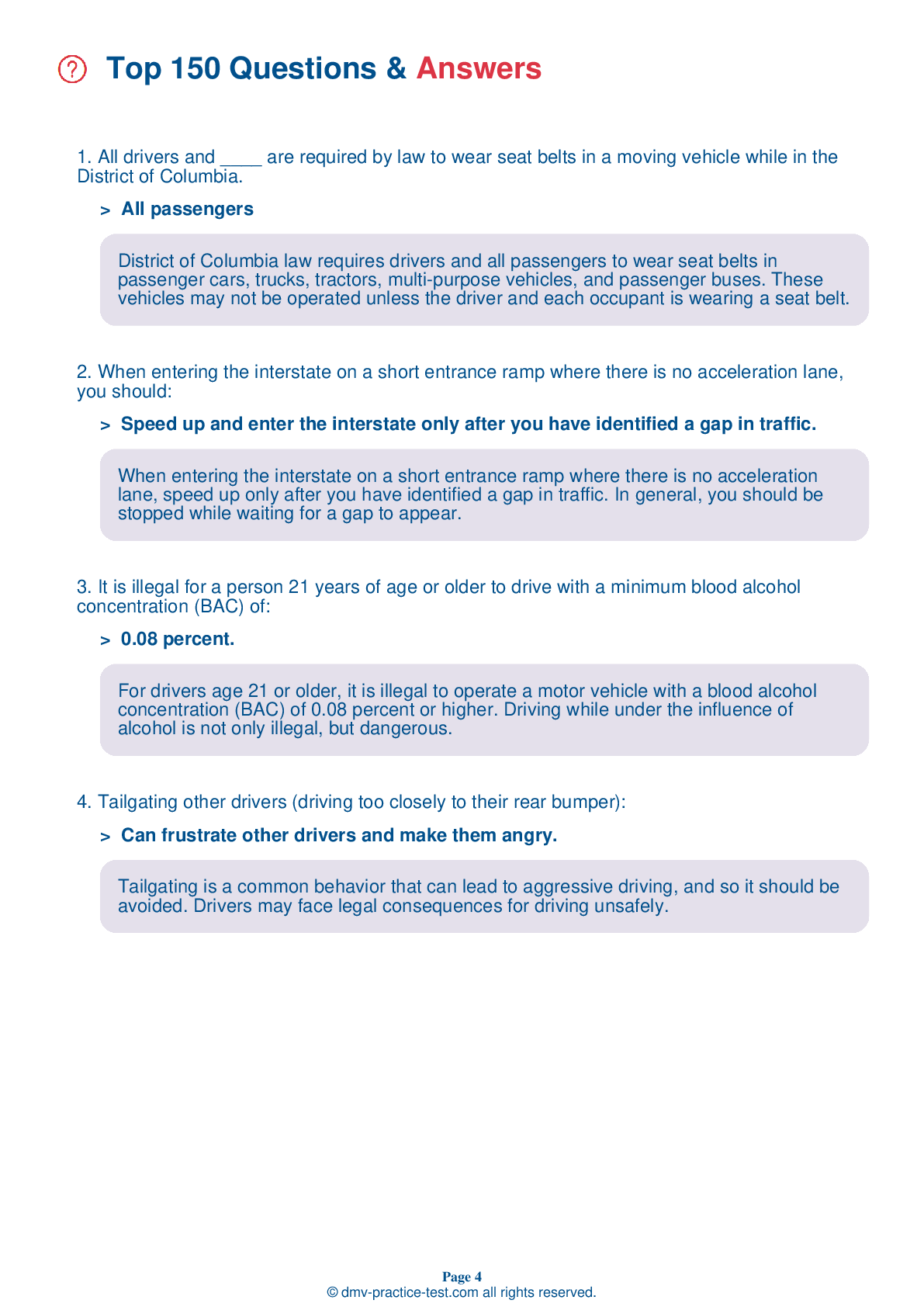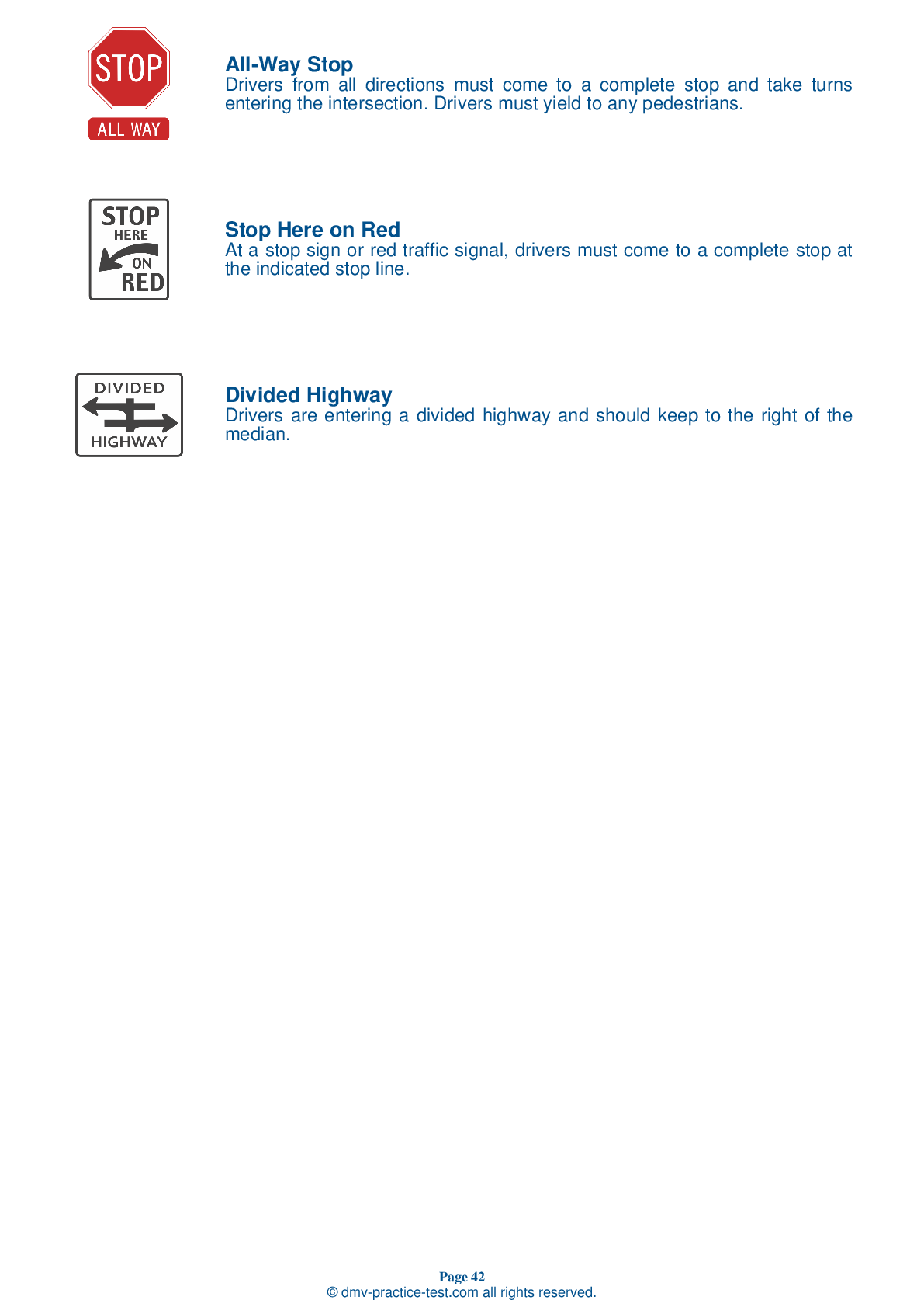FREE District Of Columbia DMV Practice Test #11
This set of District Of Columbia DMV practise tests was been updated for January 2025. It includes questions based on the District Of Columbia Driver Handbook's most significant traffic signs and laws for 2025. Use actual questions that are very similar (often identical!) to the DMV driving permit test and driver's licence exam to study for the DMV driving permit test and driver's licence exam.
On the practise exam, each question gets a tip and explanation to help you remember the concepts. The written component of the official DMV test will include questions about traffic rules, traffic signs, and driving statutes, as well as information from the Driver Handbook.
To achieve the required passing grade, you must correctly answer 20 of the 25 questions. Take our DMV practise exam to help you prepare for your District Of Columbia instruction permit or driver's licence.
The DMV exam is available in several languages.
Using any form of testing help will result in an automatic fail, and the DMV may take further action against your driver's licence, so avoid it.
1 . When driving at night, you should:
Driving at night is more hazardous than daytime driving because the lowered visibility makes it difficult to judge speed, distances, and other potential hazards. Increase your following distance to help prevent a potential collision if the vehicle in front of you should stop abruptly. Use your headlights when driving at night, following the rules for proper usage of high beams and low beams.
2 . When you are merging onto the freeway, you should be driving:
When merging onto a freeway, you should enter at or near the speed of traffic.
3 . Which of the following best ensures your safety and the safety of those around you when you are backing your vehicle?
Backing requires extra caution because it is difficult for drivers to see behind their vehicles. Before entering a vehicle to back up, walk to the back of the vehicle to check for children and small objects.
4 . On a freeway, you realize you missed your turn or exit. You should:
If you miss your turn or exit, do not back up, but go on to the next turn or exit where you can safely turn around. It is illegal to back up on a shoulder or a freeway.
5 . If you are driving and a tire suddenly goes flat, you should:
If a tire blows out or suddenly goes flat while you are driving, grip the steering wheel firmly and keep the vehicle aiming straight. Take your foot off the accelerator and do not brake. Allow the vehicle to slow by itself and use the brakes gently, but only if necessary. Pull off the road when it is safe to do so.
6 . To prevent hydroplaning, you should:
To prevent hydroplaning, you should ensure that the tires on your vehicle have good tread depth and are inflated to the proper pressure. Reduce the speed of your vehicle when driving in the rain. Hydroplaning occurs most frequently at higher speeds.
7 . The best thing to do if you become tired while driving is to:
If you become tired while driving, it is best to stop to rest or change drivers. Being tired dulls your mind and slows down your reactions, making driving hazardous.
8 . This road sign means:
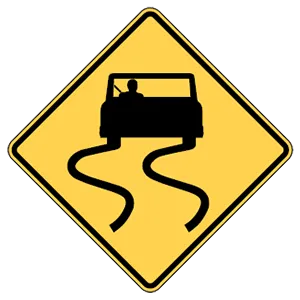
Warning signs provide notice to road users of a situation that might not be readily apparent and are usually yellow with black markings. This sign warns drivers to be careful when driving under wet conditions as the pavement will become slippery and more difficult to navigate safely.
See the exact questions that will be on the 2025 District Of Columbia DMV exam.
99.2% of people who use the cheat sheet pass the FIRST TIME
LT gives us an insight on how the cheat sheet provided her with all the study questions she needed before taking her test.
Joe initially studied with the handbook and failed his test, he eventually found us online, studied and pass his test the first time around.
